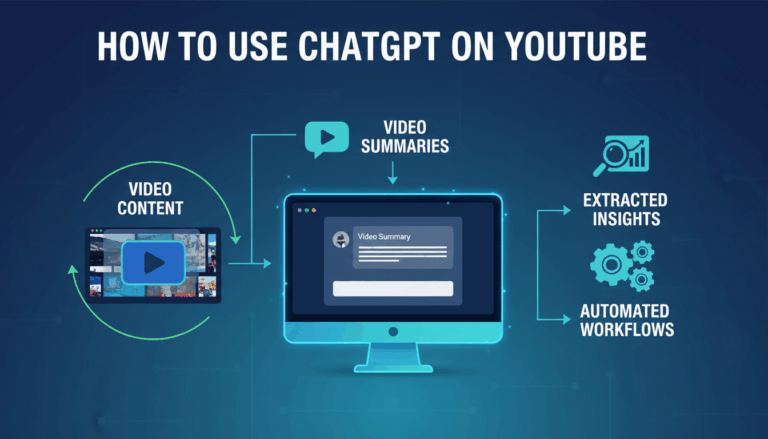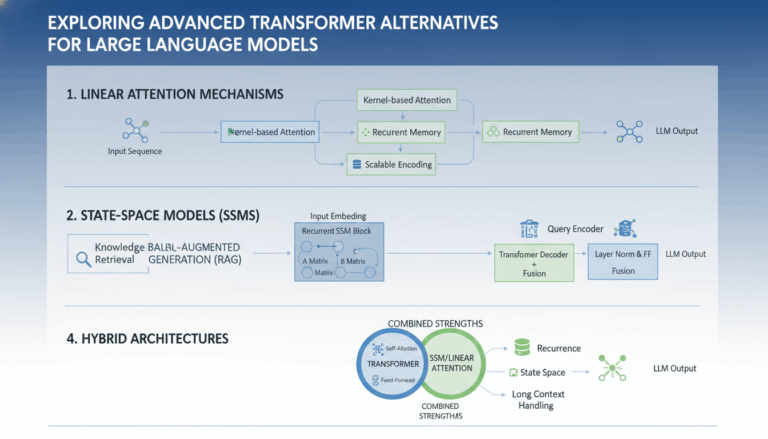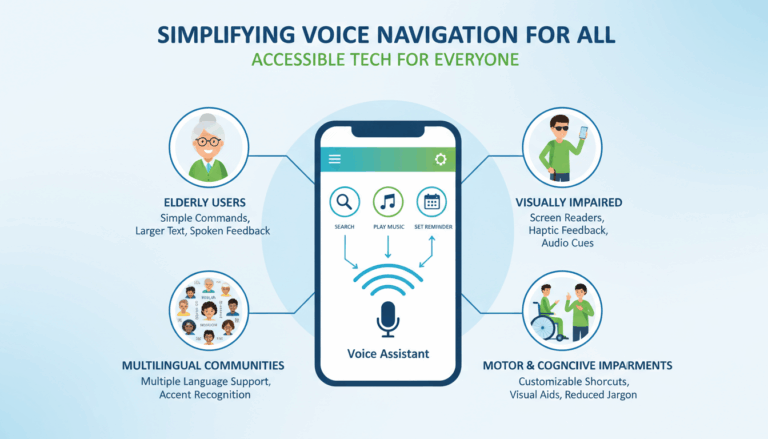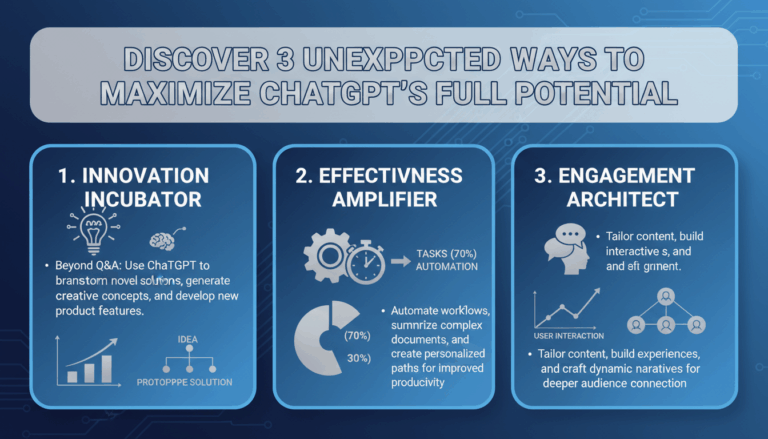Introduction to Large Language Models (LLMs)
Large Language Models (LLMs) have revolutionized the field of artificial intelligence by enhancing capabilities in natural language processing. These models are designed to understand, generate, and respond to textual data in a way that mimics human-like comprehension and cognition.
At the core of LLMs is their architecture, typically based on deep learning frameworks that utilize a network of artificial neurons organized into layers. A major player in this arena is the Transformer model, introduced in 2017 by Vaswani et al., which sparked a significant leap forward due to its effectiveness in handling sequential data while efficiently capturing contextual information.
A Transformer-based LLM comprises an encoder-decoder structure, primarily tasked with translating input data into a contextually rich representation. The encoder processes the input sequence, while the decoder generates an output sequence. Key to their operation are components like attention mechanisms, which allow the model to weigh the importance of different words in a sentence, ensuring that nuances and context are not lost.
Some of the most prominent manifestations of LLMs are models like GPT-3 (Generative Pre-trained Transformer 3) developed by OpenAI, BERT (Bidirectional Encoder Representations from Transformers) from Google, and others from various AI research institutions. Each of these models possesses unique features tailored for specific tasks, yet they share a commonality in leveraging large datasets and extensive training to achieve their prowess.
For instance, GPT-3, with its staggering 175 billion parameters, excels in generating human-like text, completing sentences, and even engaging in complex dialogues. This is made possible by pre-training the model on a diverse corpus of text followed by fine-tuning for specific applications. On the other hand, BERT specializes in understanding the context of a word in a sentence by looking at both preceding and succeeding words, making it ideal for tasks such as question answering and sentiment analysis.
The development and deployment of LLMs are driven by access to massive computational resources and extensive datasets. This enables these models to develop an understanding of syntax, semantics, and even infer meanings beyond the explicit text.
However, as powerful as LLMs are, they come with substantial limitations. One prominent challenge is their “black-box” nature; the complexity of the neural networks makes it difficult to discern how decisions are made, leading to issues in explainability. Furthermore, despite their size, these models sometimes produce text that is biased or factually incorrect, stemming from biases present in the training data or from limitations in understanding context as deeply as humans do.
The computational demands of training such large models also raise concerns regarding energy consumption and environmental impact. Companies and researchers are continually seeking ways to optimize models to reduce these environmental costs without sacrificing performance.
In conclusion, Large Language Models stand at the forefront of AI innovation, offering transformative possibilities across numerous applications in natural language processing. Their development represents a convergence of vast training data, advanced algorithms, and innovative technology, leading to capabilities that promise to expand as research continues.
Identifying the Limitations of LLMs
Large Language Models (LLMs) represent a pinnacle of achievement in artificial intelligence, yet they harbor distinct limitations that impact their application and performance. Foremost among these is the challenge of interpretability. LLMs operate as complex “black-box” systems, where their inner mechanisms and decision-making processes remain largely opaque to users and researchers. This obscurity leads to difficulties in understanding how specific outputs are derived from inputs, which is a significant drawback in fields requiring transparent and explainable AI.
Further complicating matters is the issue of bias. LLMs are trained on vast datasets that encapsulate a wide array of human languages and expressions. These datasets, however, inherently contain biases reflecting the perspectives and prejudices embedded in the text corpora over time. These biases can lead to skewed outputs that perpetuate stereotypes or falsehoods, posing ethical concerns and limiting the inclusiveness and fairness of AI-driven applications.
Another critical limitation is the factual accuracy of the outputs generated by LLMs. Despite their capabilities, these models can sometimes generate texts that are factually incorrect or nonsensical. Such inaccuracies often emerge because LLMs rely heavily on statistical associations in the training data rather than an understanding of real-world facts and logical reasoning. For instance, LLMs might convincingly generate detailed narratives about historical events with altered timelines or completely fabricated details, illustrating a gap between linguistic fluency and truthfulness.
Additionally, the computational demands of LLMs are significant. The need for immense computational resources to train and deploy these models raises environmental concerns, as energy consumption and carbon footprint become pertinent issues. Optimizing models to consume fewer resources without compromising performance is an ongoing challenge, as is ensuring equitable access to AI technology across different socio-economic contexts.
Scalability also presents a set of challenges. The ever-increasing size of LLMs necessitates more robust hardware and infrastructure, potentially limiting participation to only those entities with deep financial reserves and technical expertise. This concentration can stifle innovation and increase the barriers to entry for smaller research teams or organizations in developing regions.
Despite these challenges, efforts are underway to address these limitations. Techniques such as model distillation aim to reduce the size and energy consumption of LLMs while maintaining their output quality. Similarly, initiatives like Explainable AI (XAI) strive to render the decision-making processes of these models more transparent and understandable. Moreover, researchers are increasingly focusing on curating more diverse and representative datasets to mitigate biases and improve the factual reliability of model outputs.
In summary, while LLMs display remarkable capabilities in processing and generating language, their limitations in interpretability, bias, accuracy, environmental impact, and scalability highlight areas ripe for improvement and innovation.
Understanding Passive Learning in LLMs
Passive learning in Large Language Models (LLMs) refers to the traditional approach wherein these models are trained on vast datasets in a batch mode, passively absorbing the patterns, structures, and associations present in the data. This method capitalizes on the hugely diverse and extensive datasets that form the backbone of model training, with LLMs like GPT-3 and BERT being prime examples.
At the core of passive learning is the absence of interaction with the training environment during the learning process; the model merely processes existing data without seeking additional information or feedback outside of what is provided in its training set. This means that once training is initiated, the LLM processes every piece of data indiscriminately, analyzing the statistical relationships and co-occurrences within the text. Given the nature of passive learning, these models do not modify their training dataset to seek or filter specific types of data that could enhance their understanding or performance actively.
The training process in passive learning typically involves two major phases: pre-training and fine-tuning. During pre-training, the model is exposed to a general-purpose dataset, learning to predict the next word in a sentence or filling in the blanks, enabling it to develop a broad understanding of language syntax and semantics. This stage is devoid of any task-specific goals and aims primarily at equipping the model with a comprehensive grasp of language.
Following this, fine-tuning occurs, where the model is adapted to perform specific tasks using a more focused dataset. For example, an LLM trained for sentiment analysis would be fine-tuned with datasets specifically labeled for sentiment classification. Despite this focused training, the model remains passive; it doesn’t interact with the data dynamically, nor does it adjust its strategies in response to real-time feedback.
A significant advantage of passive learning is its scalability. Models can be trained on enormous datasets collected from the internet, allowing them to understand and generate language in a wide array of contexts. This broad training prepares LLMs for a variety of applications by equipping them with a general understanding of linguistic norms, cultural references, and conventions found within human language.
However, passive learning has inherent drawbacks, primarily related to the limitations and biases in the training data. The model’s comprehension and output capabilities are entirely dependent on the data it was exposed to during training. Any biases, inaccuracies, or gaps in this dataset can lead to skewed or erroneous outputs. Furthermore, since LLMs can only work with the static data they have been trained on, they lack the capacity to self-correct or adapt on-the-fly if they generate incorrect or biased responses. This static nature means models can become outdated quickly, especially if language use evolves or changes significantly after the training period.
In summary, while passive learning has enabled the development of powerful LLMs capable of performing a wide range of language-related tasks, the method’s passive nature inherently limits these models’ adaptability. It emphasizes the growing need for moving towards more interactive or active learning paradigms where models can continuously learn, adapt, and enhance their performance based on real-world interactions.
Exploring Active Learning as a Solution
Active learning represents a promising approach to overcome the limitations of passive learning in Large Language Models (LLMs). Unlike passive learning, where models are trained once and deploy the acquired knowledge without further adaptation or learning, active learning involves iteratively enhancing the model’s understanding by actively seeking out data and experiences that will refine its performance and decision-making capabilities.
At the heart of active learning is the concept of model interaction with the training environment. Through this interaction, models are encouraged to identify gaps in their knowledge and request additional information or clarification on ambiguous data points. This leads to more precise learning outcomes and an ability to correct erroneous patterns established during passive learning.
Uncertainty Sampling
One key technique in active learning is uncertainty sampling. Here, the model identifies instances where it is most uncertain about its predictions—these are considered areas where learning could most impact its performance. For instance, if a language model has been developed to assist in medical diagnostics by analyzing patient notes, it might be less confident about certain medical terminologies or diagnoses it hasn’t frequently encountered. In such cases, the model can selectively query these challenging instances for expert verification or supplemental training data.
This iterative process enables the model to concentrate its training on areas where its performance can improve drastically, thereby ensuring that resources are optimally allocated to resolve the most significant gaps in its knowledge.
Interactive Feedback Loops
In active learning, the integration of user feedback and real-time data plays a crucial role. By integrating user interactions, models are continually exposed to new scenarios and linguistic challenges, fostering an environment where feedback from users leads to immediate adaptation. For example, a customer service chatbot powered by active learning could adapt to new customer inquiries or regional language variations by collecting feedback on its responses and subsequently retraining to improve its future interactions.
Active Learning in Practice
Numerous real-world applications illustrate the efficacy of active learning. Educational software, designed to cater to personalized learning experiences, uses active learning to adapt to students’ learning speeds and styles. By monitoring which topics students struggle with, the software dynamically adjusts its curriculum, addressing students’ weak points more effectively.
Similarly, in the realm of natural language processing, active learning can be employed to ensure models remain up-to-date with evolving language patterns. Social media platforms, where slang and vernacular change rapidly, can employ active learning to continually adapt their content moderation models, ensuring they can effectively recognize and respond to new terms or phrases.
Challenges and Future Directions
While active learning holds tremendous promise, it is not without its challenges. Implementing active learning requires more sophisticated infrastructure capable of handling continuous data processing and model updating. Additionally, there is a need for robust systems to evaluate the quality of new data being incorporated, as poor data quality can lead to deterioration in model performance.
Despite these challenges, the potential for active learning to transform how LLMs are trained is substantial. By continuously engaging with real-world data and feedback, models can remain relevant, reduce biases, and improve their accuracy over time. As the field progresses, the amalgamation of active learning with advanced artificial intelligence will likely yield more versatile and capable models, driving innovations across diverse sectors.
Implementing Active Learning in LLMs
Implementing active learning in Large Language Models (LLMs) requires a strategic approach to enhance their capabilities through dynamic interaction with data. Active learning involves moving beyond traditional batch training to a more iterative process where the model actively seeks to improve its performance by querying new data points and incorporating feedback.
The initial step in implementing active learning for LLMs is setting up a framework that allows the model to identify areas of uncertainty. This involves utilizing mechanisms such as uncertainty sampling, where the model flags instances it struggles to interpret or classify confidently. An essential part of this process is determining a threshold for uncertainty, which can be established by measuring confidence scores on predictions. When the model’s predictions fall below this threshold, those data points are marked for further review.
In practice, an LLM designed for customer interaction might flag queries it isn’t confident in answering (e.g., using ambiguity markers or low confidence scores). These flagged interactions can then be routed to human reviewers or additional automated processes, where the correct responses are identified and fed back into the model as new training data. This feedback loop facilitates the active refinement of the model’s response capabilities.
Data Curation and Feedback Integration
Subsequent to identifying uncertain instances, it’s vital to curate high-quality training data to address these knowledge gaps. This often involves creating a diverse and representative dataset that corrects misunderstandings or completes knowledge areas identified during the uncertainty sampling phase. For example, if an LLM exhibits uncertainty in particular linguistic nuances or rare terms, supplementary annotated datasets should focus on these areas. Incorporating expert human feedback is also crucial, as it provides contextually rich insights that automated processes might not capture.
Feedback loops can be established using real-time user inputs. For instance, an LLM used for content filtering on a social media platform might integrate user reports and moderation outcomes to adjust its algorithms continually. Training the model with these real-life corrections ensures it adapts to present linguistic patterns, cultural changes, and emerging trends.
Interactive Model Updating
A significant component of implementing active learning is the ability to update models iteratively as new data comes in. This requires a dynamic infrastructure where models are retrained at regular intervals or whenever substantial new data is available. Cloud-based machine learning platforms or containerized environments often serve this purpose effectively by providing scalable computational resources that facilitate frequent model updates without downtime.
Continuous integration systems can automate the retraining process, ensuring that new data is seamlessly incorporated into the model’s learning paradigm. This automation can be achieved through machine learning operations (MLOps) pipelines, which handle data validation, processing, model training, and deployment stages efficiently.
Challenges and Considerations
While active learning offers compelling advantages, implementing it in LLMs involves challenges, including data quality assurance and computational cost management. Ensuring the accuracy and relevance of new data is vital to prevent the degradation of model performance. Strategies such as cross-validation, anomaly detection, and bias-checking must be incorporated into the data preprocessing stages.
Additionally, the computational overhead associated with continually updating models presents logistical challenges. Balancing the frequency of updates with computational resources and financial constraints requires careful planning and infrastructure optimization.
In conclusion, transitioning to active learning in LLMs involves a blend of technical strategies and logistical considerations. By emphasizing targeted data acquisition, feedback loops, and interactive updating, we can significantly enhance the adaptiveness and accuracy of language models, opening pathways to more robust and resilient AI systems.
Evaluating the Impact of Active Learning on LLM Performance
Active learning introduces a strategic shift by facilitating the ongoing optimization of Large Language Models (LLMs) through real-time interaction with data. Assessing the impact of active learning on LLM performance involves evaluating multiple facets, such as efficiency, adaptability, accuracy, and resource utilization.
Initially, active learning improves model efficiency by optimizing data usage. Traditional passive learning approaches require training on vast datasets indiscriminately. In contrast, active learning enables LLMs to selectively focus on data points that contribute to meaningful learning, therefore reducing unnecessary processing and computational demands. By identifying uncertainties and requesting supplementary information where needed, the model targets its computational resources effectively, ensuring that efforts are concentrated on resolving significant knowledge gaps.
In terms of adaptability, active learning empowers LLMs to remain relevant and responsive to evolving language nuances and domain-specific terminologies. For example, a financial services chatbot employing LLMs can continually enhance its understanding of emerging financial jargon and regulations through pinpointed data collection and dynamic retraining. This adaptability fosters an enhanced user experience by maintaining high relevancy and accuracy in output.
Active learning significantly influences accuracy by placing the model in a continuous learning loop that emphasizes precise data integration. Regular updates enable the model to refine its predictions based on updated inputs. For instance, when used in healthcare, an LLM supported by active learning can consistently improve its diagnostic capabilities by assimilating new medical research and patient interactions. This constant evolution is crucial for domains where accuracy is pivotal and directly impacts outcomes.
Furthermore, active learning’s selective data approach helps in bias reduction, a critical factor in improving LLM performance. By actively seeking diverse data, active learning models attempt to create a more balanced training dataset. This mitigates the influence of skewed historical data, reducing the perpetuation of biases.
In relation to resource utilization, implementing active learning can initially appear resource-intensive due to the need for dynamic feedback loops and frequent model updates. However, the targeted and iterative nature of the learning process can lead to long-term resource savings. By minimizing redundant computations and focusing computational efforts on only the most informative data points, long-term reductions in energy consumption and operational costs are achievable.
Case studies further illustrate how organizations have successfully implemented active learning to bolster performance. For instance, companies employing active learning in customer service environments have reported substantial increases in response accuracy and customer satisfaction due to the system’s ability to rapidly integrate feedback and language trends into the chatbot’s operational framework.
Finally, interactive systems development benefits significantly from active learning by aligning models closer with user expectations and real-world needs. Feedback loops from active learning are instrumental in fine-tuning models, making them more competent at handling user queries, detecting nuanced language shifts, and adapting to novel scenarios promptly.
Overall, evaluating the impact of active learning on LLM performance reveals a multifaceted improvement across adaptability, accuracy, bias reduction, resource optimization, and overall efficiency, driving continued advancement and refinement in AI applications.



